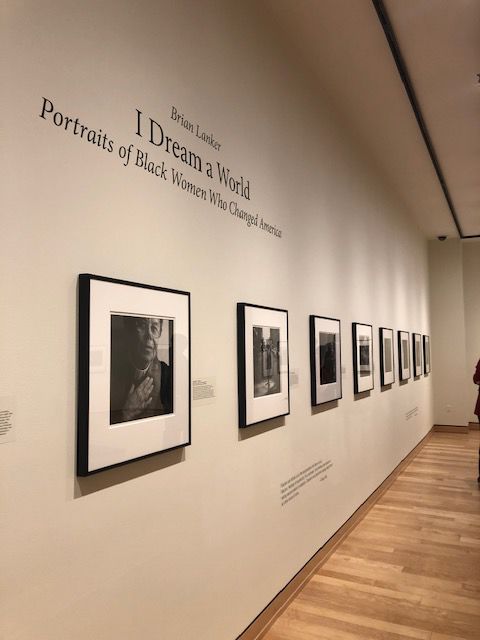‘I Dream a World’ exhibit showcasing humanity
February 16, 2020
The Mulvane Art Museum presents an opening reception for the late photojournalist, Brian Lanker. The exhibition consists of portraits of 76 black women who changed America.
“I Dream a World,” located on the 2nd Level South Gallery in Garvey Hall narrates what it means to be human, as people in the community learn about each woman’s story of compassion and suffrage.
Washburn acquired this collection of photographs by bringing Lanker’s art “home.”
Lanker’s art shines a light to voices that extend borders, tells stories with photographs, and opens a new chapter of knowledge for many of us to feel braver — more human — by capturing 76 black women’s triumph and perseverance.
“It was ready for a home,” said Connie Gibbons, Director of the Mulvane Art Museum. “Topeka is the right place for it. The university’s history as an interest, passion for supporting equity, civil rights, diversity and inclusion: for all those reasons, it seemed like the right thing to do.”
The Corcoran Art Museum in Washington D.C. previously housed the portraits.
According to Collections Manager, Rebecca Manning, the “I Dream a World” exhibition set a record attendance Feb. 10, 1989.
“I have to keep pinching myself. Lanker was a force,” said Gibbons. “He had a real vision and a passion for telling a story with photographs. Lanker would spend two days with each woman. He would first go in and interview, get to know them. Then going back the next day, he would think of where and how to photograph them.”
Activists, politicians, artists, writers and lesser known women across the country show individual stories that accumulated into a two-year collection of experiences, according to Lynda Lanker, Brian’s wife.
Lanker received his first Pulitzer Prize for a work titled “Moment of Life” at the Topeka Capital Journal. Brian met Lynda while he was photographing her giving birth, calling it “Moment of Life.”
“I realized that my husband had a big vision,” said Lynda Lanker. “Once he was a freelancer, his community grew into the nation’s borders – and beyond. His view of the world was big. He read ‘The Color Purple’ by Alice Walker. He had never delved into or known anything about the lives of black women.”
According to Lynda Lanker, his vision of forming connections with 76 women across the country was supported by the efforts of his freelance work for publications such as Life Magazine, Sports Illustrated, and National Geographic.
“I think these women can teach us more about what it means to be human than anybody,” said Gibbons. “The women, their stories, their lives are more relevant than they ever were. They’re contemporary. It’s a story that still needs to be told. There’s a whole generation of people who don’t know their stories who now get a chance to experience that.”
Change is the accumulation of ideas and efforts. Everyone has a message, a voice. Reading and experiencing the individual efforts of these women’s lives questions us to think inwards about what all of us can do to contribute to change.
“What are you willing to sacrifice to do the right thing?” Gibbons asked. “Would I have the courage to do that? It creates a new bar for how we think about ourselves. I think all these women have those kinds of stories and every one of them speak for us. We should be listening.”
Edited by Hannah Alleyne, Adam White, Diana Martinez-Ponce, Wesley Tabor




